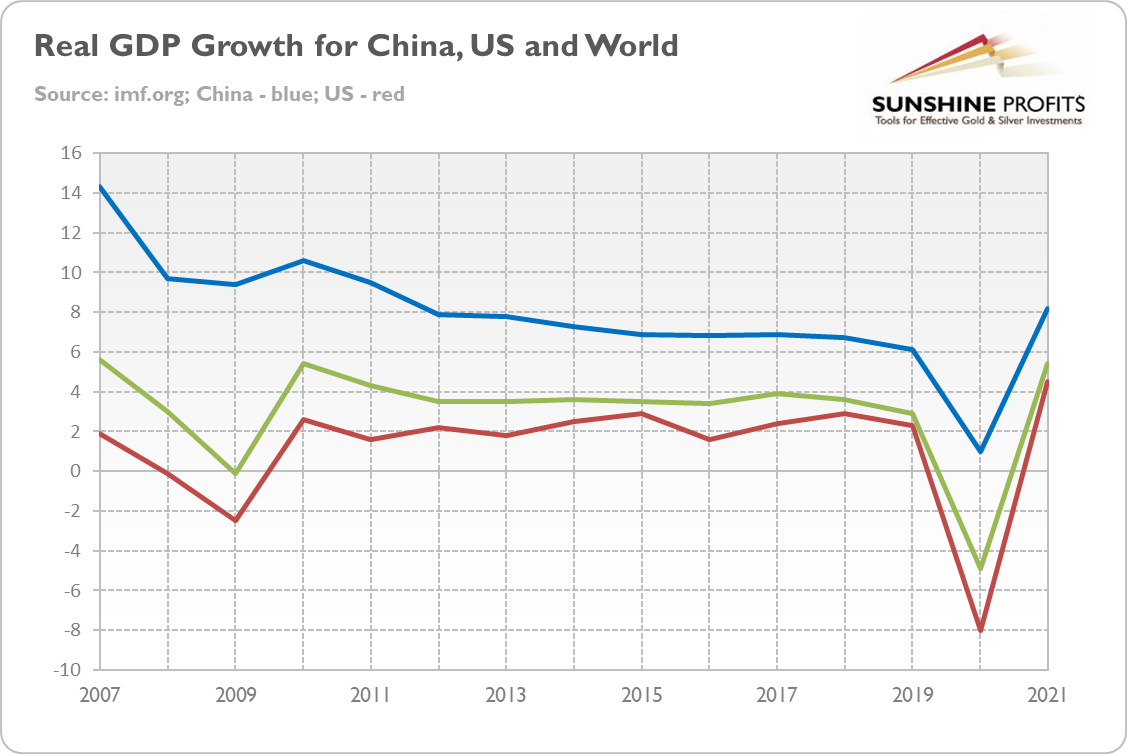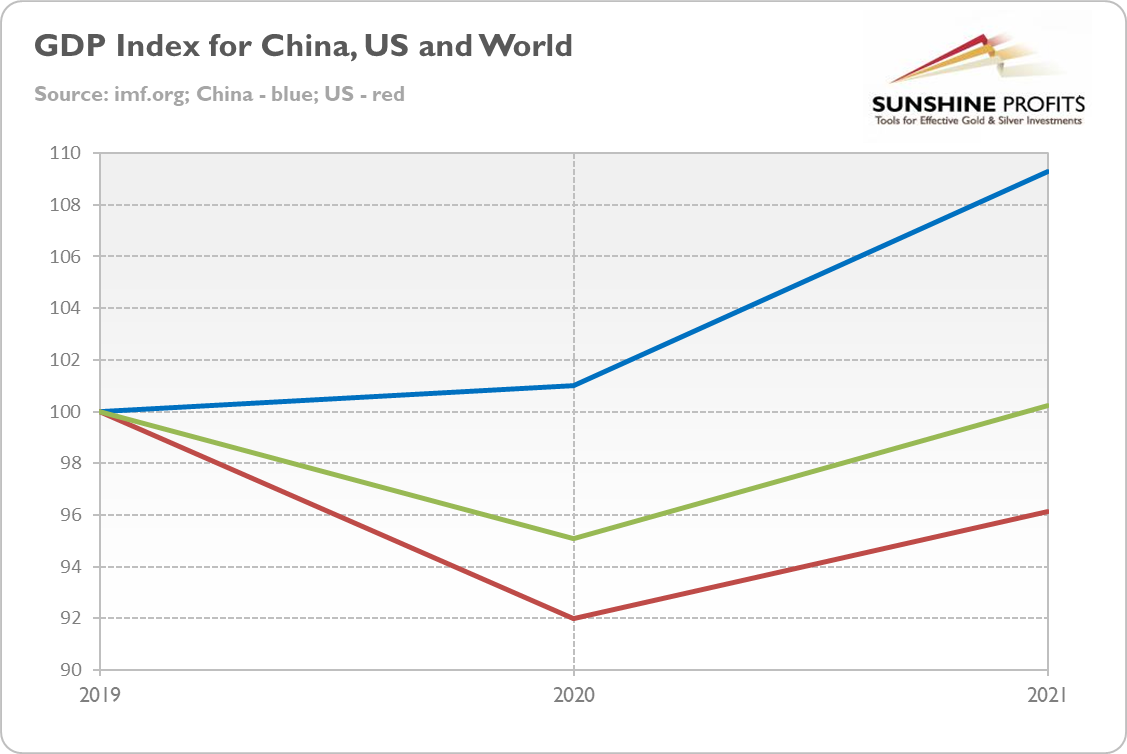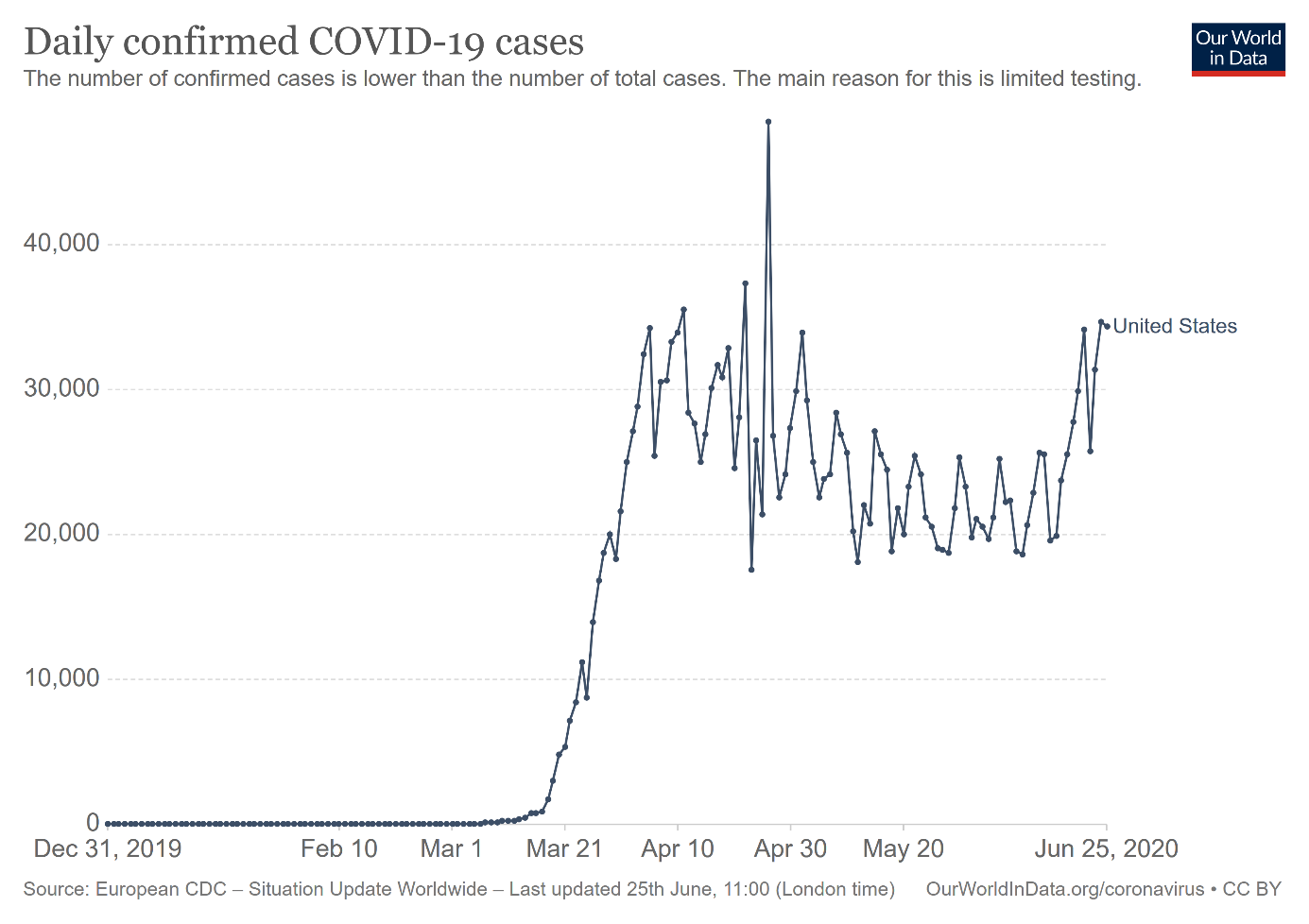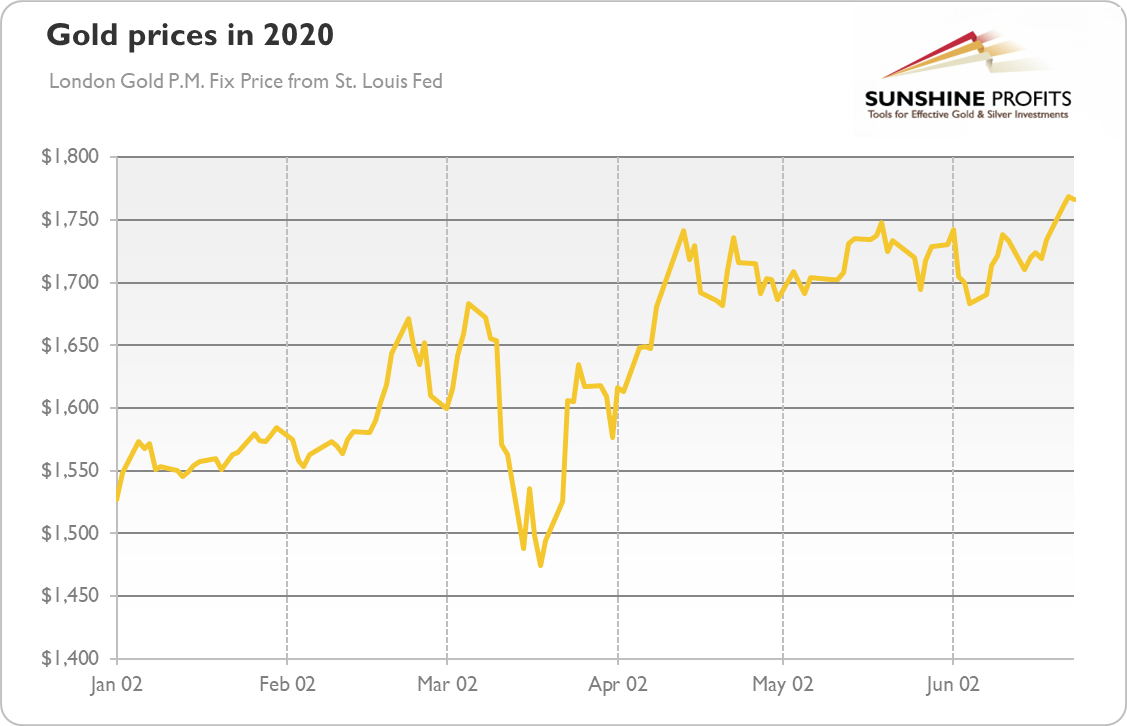The International Monetary Fund is predicting deep recession and slower recovery from the coronavirus crisis, which could prove to be a positive for gold.
The June edition of the IMF’s World Economic Outlook Report shows the fund is predicting an even a deeper recession than two months ago.
As a reminder, in April edition of the World Economic Outlook Report, the IMF projected that the global economy would contract sharply by 3% this year, while the US economy would plunge 5.%. When it comes to 2021, the IMF projected 5.% growth for the global economy and 4.7% for the US
Many analysts cheered the vigorous pace of recovery expected by the IMF. I did not. The IMF’s projections are always too optimistic, so I remained skeptical. I said at the time:
"If something seems too good to be true, it probably is. To be sure, there are many reasons for optimism. In some countries, the number of new cases has come down. And the unprecedented pace of work on treatments and vaccines also promises hope. However, the IMF’s base scenario assumes basically the V-shaped recovery, which is not likely to happen.
As long the society does not have herd immunity, the economy will not simply return to normal, pre-pandemic life. And if history of previous deep downturns is any guide, the reduced investment, employment and commercial bankruptcies will leave long-term scars on the economy.
It turned out that the IMF was wrong and I was right. In the newest report, the Fund expects that the global economy will drop 4.9 percent this year (almost two percent below the April’s forecast!) and that it will expand only 5.4 percent in 2021. When it comes to the U.S. economy, the IMF projects that it will plunge 8 percent (more than two percent below the April’s forecast!) and that it will recover just 4.5 percent in 2021."

It means that the global, and the US, economy are likely to experience their worst recessions since the Great Depression, far worse than the financial crisis of 2007-2009, and that they will turn out to be deeper than previously expected, while the pace of recovery will be more gradual than previously forecasted.
Indeed, as the chart below shows, the US GDP will not return next year to the pre-pandemic level. It will happen in 2022 or maybe even in 2023. So, please forget about the V-shaped recovery, especially since that even these projections may be too optimistic.

Implications for Gold
What does it all mean for the gold market? Well, deeper recession and slower recovery are good news for gold, which shines the most during the period of economic crises and subdued economic growth, especially in the early stages of expansions.
Moreover, the grimmer IMF’s report, combined with the rising number of daily new cases of COVID-19 in the US (see the chart below), could decrease the risk appetite and increase the demand for safe-havens such as gold.

Indeed, the S&P 500 declined yesterday, while the price of gold surged to its highest in nearly eight years (as the chart below shows). The downward revision of economic projections and the resurgence of coronavirus in America clearly show that “we are definitely not out of the woods”, as Gita Gopinath, the IMF’s chief economist, put it.

And the coronavirus crisis will also generate medium-term challenges, as we repeated many times. In particular, already high indebtedness will become even higher. According to the IMF, public debt will reach a record high this year, in both developed and emerging countries. Global public debt is forecast to jump above 101 percent, almost 20 percentage points above 2019. Such an abrupt rise increases the odds of a sovereign debt crisis and pressure for interest rates to remain at ultra-low levels. Such environment looks fundamentally positive for gold.
